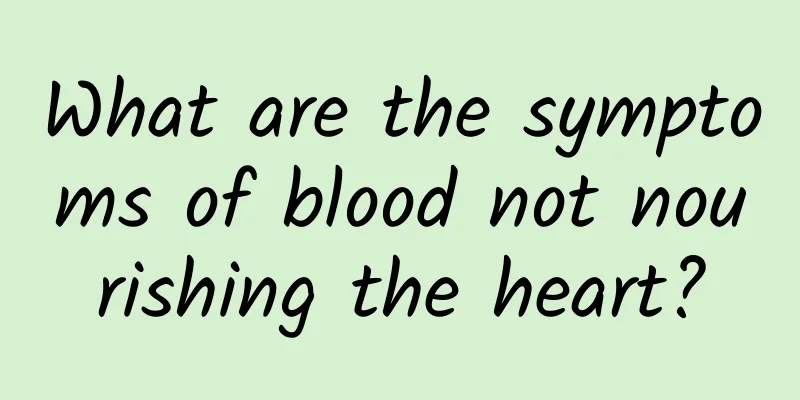Symptoms of hydrophobia

|
When it comes to hydrophobia, I believe that most people are not very familiar with it. But if we talk about rabies, then everyone must be familiar with it. In fact, the emergence of hydrophobia is closely related to rabies. Generally speaking, hydrophobia has a certain incubation period. If everyone knows the symptoms of hydrophobia, they can discover it in time. So, what are the symptoms of hydrophobia?
Symptoms and causes of hydrophobia 1. Usually, not all people will develop the disease immediately after being infected . About 15% to 20% of patients bitten by sick dogs carrying rabies will develop the disease, and about 50% of patients bitten by sick wolves will develop the disease. Whether or not the disease develops and the length of the incubation period are closely related to the following five factors: About 15% to 20% of patients bitten by rabies-carrying dogs will develop the disease. 1. The location of the bite. Those bitten on the head, neck, or hands are more likely to get sick and have a shorter incubation period; the opposite is true for those bitten on the lower limbs. 2. Degree of trauma. Patients with large and deep trauma and multiple wounds are more likely to develop the disease and have a shorter incubation period. 3. Local treatment: Some patients rarely get sick after proper treatment, but the incubation period of their disease is very long. 4. The thickness of clothing. People who are wearing thick clothing at the bite site are less likely to get sick and have a longer incubation period. 5. The use of adrenal cortical hormones and excessive mental stress (such as fear of rabies) can sometimes induce this disease. 2. The rabies virus has a strong affinity for the nervous system . After entering the human body, the virus mainly spreads and diffuses along the nervous system. After invading the human body, the virus first reproduces in the skeletal muscles and nerves of the wound. This is called the local small-scale reproduction period. This period can be long or short, as short as 72 hours or as long as several weeks, months or even longer. After the virus reproduces a small amount locally, it will immediately invade the nerve endings and advance along the peripheral nerves toward the nerve center at a speed of 3 mm per hour. When the disease reaches the spinal cord, it will immediately reproduce in large numbers and spread throughout the nervous system after 24 hours. Later, the virus spreads along the peripheral nerves to the extremities, and finally reaches many tissues and organs, such as salivary glands, taste buds, cornea, muscles, skin, etc. Because the head, face, neck, hands and other parts are rich in nerves, the virus is easy to reproduce, and coupled with their proximity to the central nervous system, more people become ill after being bitten in these parts, and the incubation period is also shorter. The more serious the injury, the more likely it is to develop the disease. 3. The virus mainly invades the vagus nerve nucleus, glossopharyngeal nerve nucleus and hypoglossal nerve nucleus in the central nervous system . These nerve nuclei mainly control the swallowing muscles and respiratory muscles. After being invaded by the rabies virus, they are in a highly excited state. When drinking water, hearing the sound of running water, or being stimulated by sound, wind, and bright light, the swallowing muscles and respiratory muscles can spasm, causing difficulty in swallowing and breathing. If the virus mainly invades the medulla oblongata and spinal cord, clinically there will be no convulsions, but various paralysis types, but this is relatively rare. Diagnosis of hydrophobia 1. Classification The varying length of the incubation period is one of the characteristics of this disease. Most cases occur within 3 months, 4% to 10% occur more than half a year, and about 1% occur more than 1 year. There is even one case recorded in the literature lasting as long as 10 years. Factors that affect the length of the incubation period include age (shorter in children), wound location (head and face are more susceptible to the disease earlier), wound depth (deeper wounds are more susceptible to the disease earlier), the number of viral invasions and the virulence of the strain, whether formal wound expansion treatment and rabies vaccination were performed after the injury, etc. Other factors such as trauma, cold, and excessive fatigue may also lead to premature onset of the disease. Clinical manifestations can be divided into two types: manic type (encephalitis type) and paralytic type (quiet type), which are divided into the following three stages: 1. Prodromal stage The prodromal phase is similar in both types. Before the excited state appears, most patients have low fever, drowsiness, lack of appetite, and a few have nausea, vomiting, headache (mostly in the occipital region), back pain, general discomfort, etc.; they begin to be sensitive to stimuli such as pain, sound, light, and wind, and have a tightening feeling in the throat. Early symptoms with great diagnostic significance are numbness, itching, tingling, or abnormal sensations such as crawling insects and ants in the healed wound site and nerve pathways, which occur in about 80% of cases. This is caused by viral reproduction stimulating neurons, especially sensory neurons, and the symptoms can last from hours to days. This phase lasts 1 to 2 days and rarely exceeds 4 days.
2. Excitement or spasm It can be divided into two types, and the manifestations of the two types are different. 1. Manic rabies It is common, accounting for about 2/3 abroad. The patient gradually enters a state of high excitement, with prominent manifestations of extreme terror and a sense of foreboding of impending disaster. He is also very sensitive to stimuli such as the sound of water, light, and wind, causing paroxysmal pharyngeal muscle spasms, difficulty breathing, etc. Hydrophobia is a specific symptom of this disease, but it may not occur in every case and does not necessarily appear in the early stages. Typically, drinking water, seeing water, hearing the sound of running water, or just mentioning drinking water can cause severe spasm of the pharyngeal muscles. Therefore, the patient is extremely thirsty but dares not drink, and even if he wants to drink, he cannot swallow it. His mouth is full of drool, which stains the bed or spit everywhere. Due to vocal cord spasm, the patient may have unclear pronunciation, hoarse voice, or even loss of voice. |
>>: How to repair acne scars and acne pits? 5 tips to have healthy skin
Recommend
What are the methods to tighten the abdomen?
People who want to lose weight will find that it ...
Can the pancreas be transplanted?
The pancreas can be transplanted. Pancreas transp...
What to do if you have frequent urination? There are ways to adjust your diet
Frequent urination and urgency are very embarrass...
No embryo at 45 days of pregnancy
The baby's development in the mother's be...
What is the medicinal value of toad grass?
Maybe everyone is familiar with Toad Grass. This ...
I ate spicy noodles and felt uncomfortable in my stomach
Spicy strips should be a snack that young people ...
Can I eat grapefruit when I have my period?
I believe everyone must be familiar with grapefru...
How is a woman's menstrual cycle calculated?
Usually we always have a bunch of mobile phone so...
What are the causes of difficulty falling asleep?
Many people tend to ignore the problem of difficu...
Thirteen-ingredient Chinese medicine formula for pregnancy
The Thirteen Well-Known Gynecological Prescriptio...
The harm of posterior fontanelle depression
We all know that the body structure of children i...
Rub and knead it every day, and it will be so vigorous after one month
Lack of physical energy is a common problem in li...
Is moxibustion on Sanyinjiao acupoint good?
Sanyinjiao is a common moxibustion point. Moxibus...
What are the benefits of scraping and cupping
Scraping and cupping are commonly used treatment ...
What antibiotics are used for streptococci?
Bacteria are a type of microorganism that is wide...









